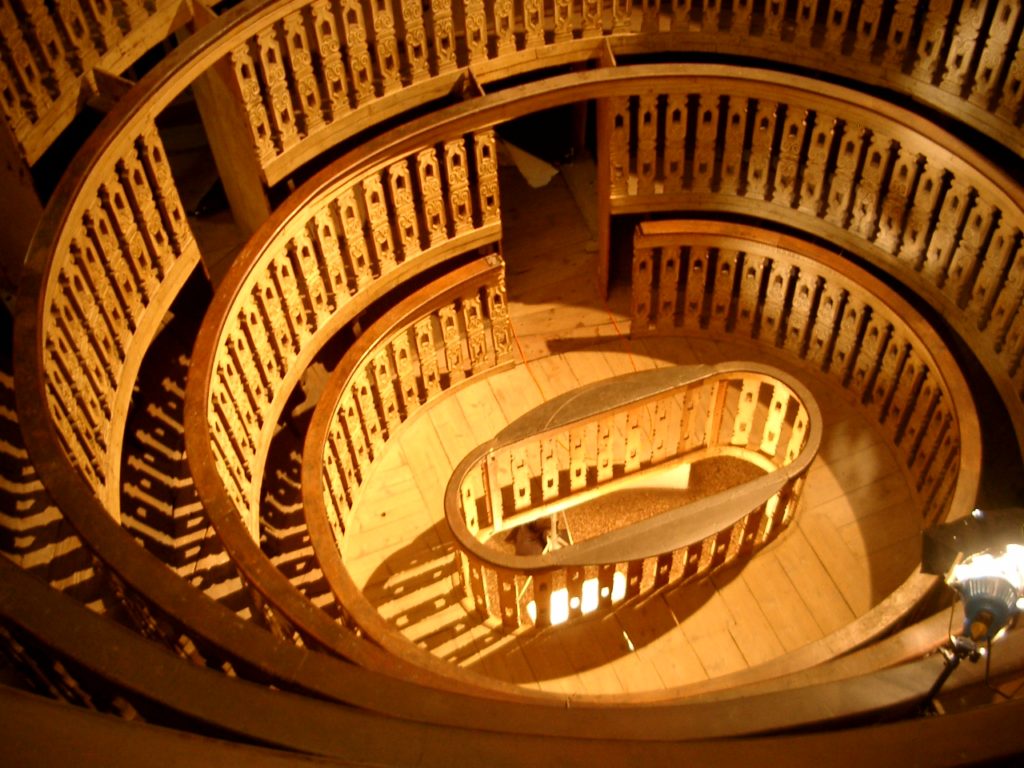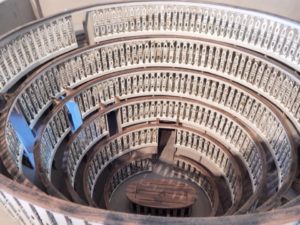The Anatomical Theatre of Padua, also known as the Teatro Anatomico, is a historic anatomical theater located in Padua, Italy. It is part of the University of Padua and is the oldest surviving anatomical theater in the world. The construction of the theater began in 1594, and it was completed in 1595.

An anatomical theatre was a specialized building or room, resembling a theatre, used in teaching anatomy at early modern universities. They were typically constructed with a tiered structure surrounding a central table, allowing a larger audience to see the dissection of cadavers more closely than would have been possible in a non-specialized setting.
The Anatomical Theatre was designed by the architect Girolamo Fabrici d’Acquapendente and commissioned by the Venetian Republic. The purpose of such theaters was to provide a dedicated space for the observation of dissections, which were an important part of medical education during the Renaissance.

The Anatomical Theatre of Padua is notable for its richly decorated wooden interior, including statues and carvings. The design reflects both the scientific and artistic interests of the Renaissance period. The theater was used for anatomical studies until the 18th century, after which it was gradually replaced by more modern facilities.
Today, the Anatomical Theatre of Padua is a popular tourist attraction and is considered an important historical and cultural landmark. Visitors can tour the theater and learn about its historical significance in the field of anatomy and medical education during the Renaissance.
According to the Internet














